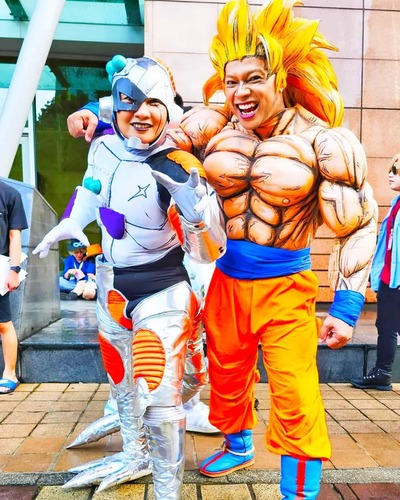 Flowers and Rubber Duckie :
Flowers and Rubber Duckie :1. Oooh! Pretty flowers! They’re down pretty low to the ground, and the wind’s blowing around a lot. I’d better go to Shutter Priority to freeze the movement. So if I’m shooting low, what’s going to be in the background?
2. Well those ducks sure are different! That could make an interesting splash of colour behind the flowers, but it might be cool to blur them in the DOF so it’s not really obvious what they are.
3. Ugh, the pond’s a bit overgrown, and there’s garbage floating in it. Gotta make sure that’s not visible. The low angle and narrow DOF will help that.
4. Alright then, time to get down on the ground and see how it looks through the viewfinder.
 Clouds Reflected :
Clouds Reflected :1. Hmmm, the sky’s looking pretty nice at the moment. It would be nice to work that into a shot somehow.
2. That reflective wall of windows is pretty cool too, ahh and they’re reflecting the clouds from the other direction too.
3. It might be nice to use those bushes to frame the shot too, and contrast the blue of the sky.
4. If I go over to that path, I can look right up to those windows and the clouds beyond.
 Bricks Before Blue :
Bricks Before Blue :1. This building may have potential, but it’s looking pretty bland at the moment, especially with the sun behind the clouds. Those bricks have great texture though, and that wall will be lit from a low angle, which will bring it right out.
2. That curved wall is unusual too, I wonder how I could bring those two elements together, and eliminate all the boring stuff?
3. Maybe a low angle looking up past the curve into the sky could make for an interesting geometric minimalist photo.
 Zooming In 1 :
Zooming In 1 :1. Looking good! The sun makes a big difference. The curved lines of the bricks are leading the eye nicely into the centre of the image.
2. This wall is showing the texture I had hoped, and it looks great against the blue. The lines also lead the eye right into the centre of shot.
3. Okay, lets position the top of that wall so it’s entering shot on the bottom third.
4. Now where to put the curved wall? Ok the top edge can just dissappear out the corner, and I’ll put the part where the curve really gets going on the top third line. *click*
Have a look at the result:
 Zooming In 2 :
Zooming In 2 :1. This could be tricky to expose, I’d better go a stop under the metered exposure to avoid burning out the sky. I can pull the bottom half back up in Lightroom. So, lets put those windows around the bottom third line.
2. That post can go on the right third line, and I’ll make that my vertical as well.
3. Nice! I can put that large cloud right around the top left thirds intersection.
4. And now we’ve got a cool recursive cloud thing going on in the reflection, and it’s even helping balance the composition around the centre. *click*
Have a look at the result:
 RM2...Very2 a limited..igt lg time mule2 kuar duit nie..berduyun2 mnusia g tukau duit kat bank..aku pon pnh dpt duit raye RM2 nie..ek3..tp skrg sgt la susah & sukarnyer nk dpt "note" nie...in my collection ade 2 keping jer...skping aku letak dlm box kat umah & lg skping aku angkut ke hulu ke hilir dlm mini purse aku...walau x gune tp kate org dolu2 at least letak la duit singgit 2 dlm purse..supaya kite x kering duit even dh hujung/tgh/awl bulan...ekekeke...tu kepercayaan ajer...terpulang pade korng nk pcaya / x..ek3.
RM2...Very2 a limited..igt lg time mule2 kuar duit nie..berduyun2 mnusia g tukau duit kat bank..aku pon pnh dpt duit raye RM2 nie..ek3..tp skrg sgt la susah & sukarnyer nk dpt "note" nie...in my collection ade 2 keping jer...skping aku letak dlm box kat umah & lg skping aku angkut ke hulu ke hilir dlm mini purse aku...walau x gune tp kate org dolu2 at least letak la duit singgit 2 dlm purse..supaya kite x kering duit even dh hujung/tgh/awl bulan...ekekeke...tu kepercayaan ajer...terpulang pade korng nk pcaya / x..ek3.


















































